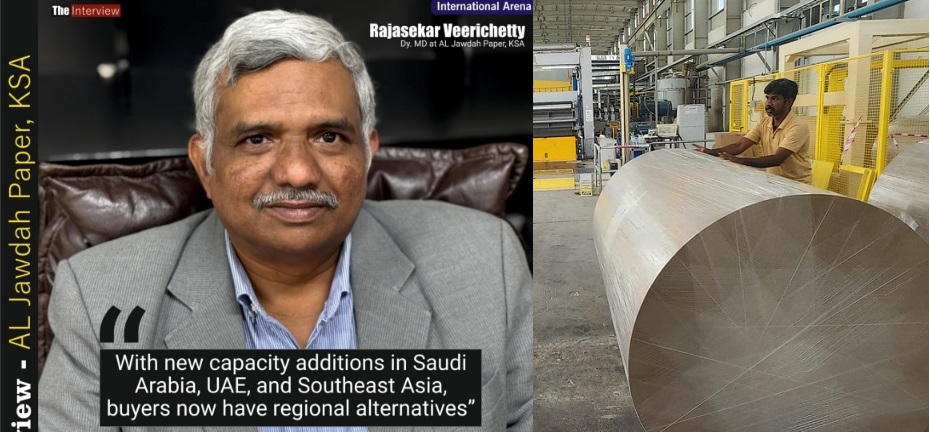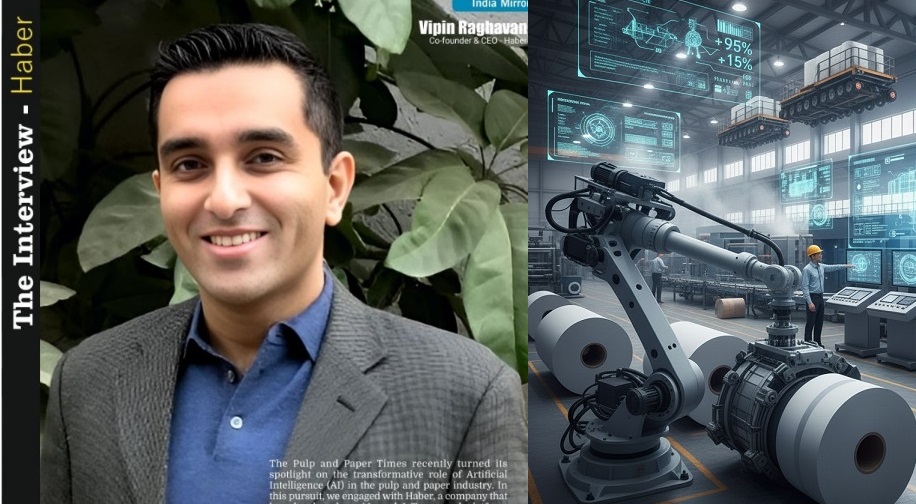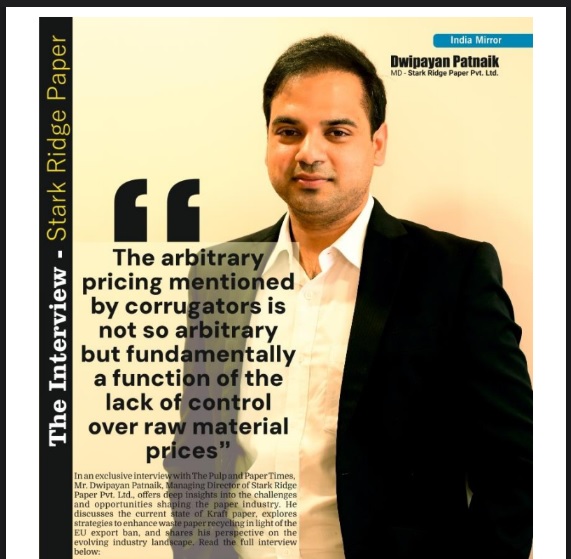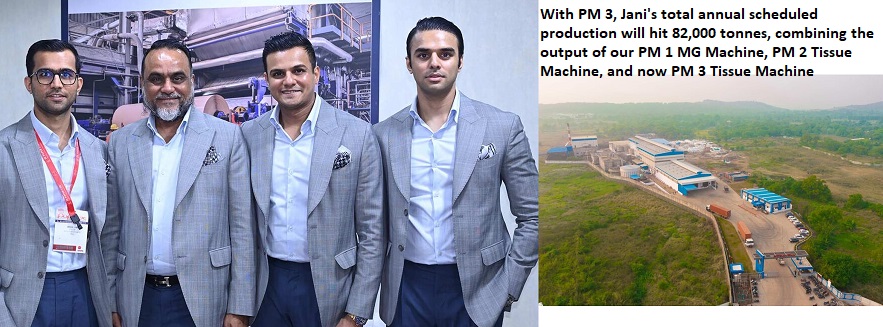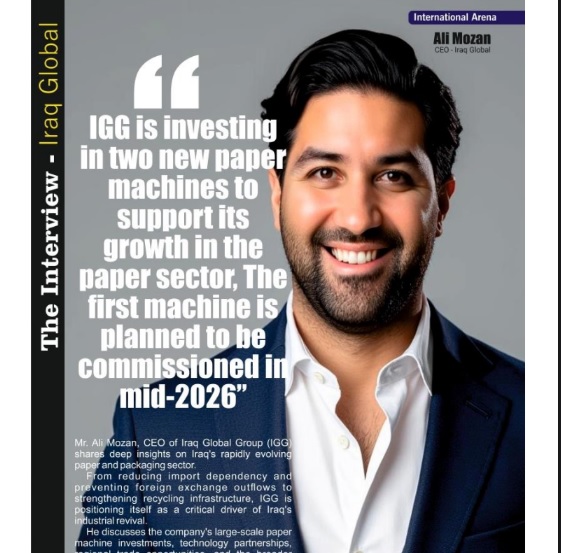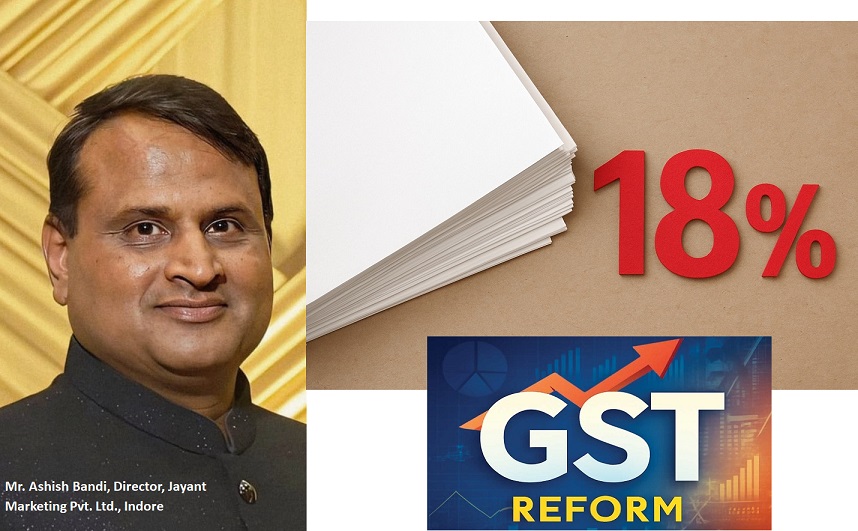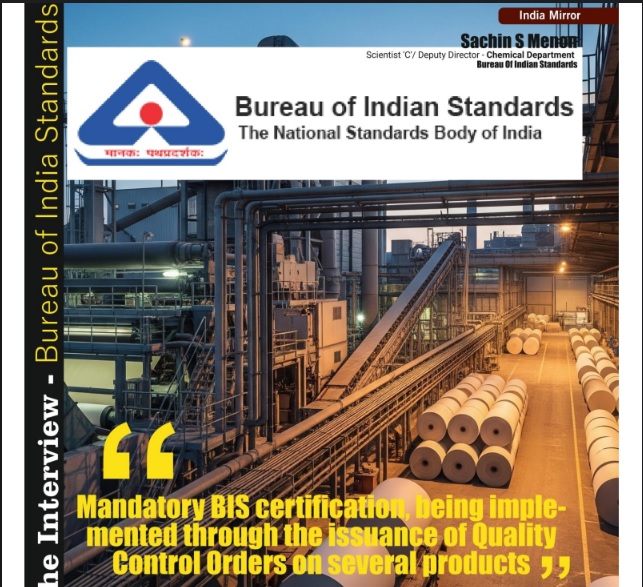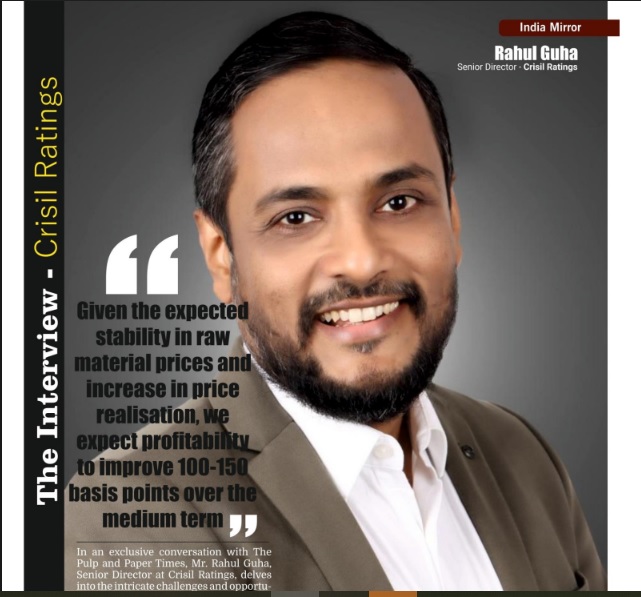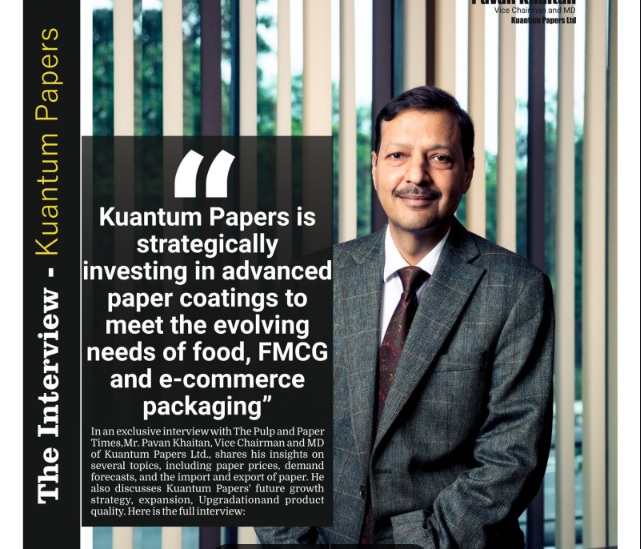Future Is Eco-Friendly Packaging: Atit Gandhi - Montage Group


Future Is Eco-Friendly Packaging: Atit Gandhi - Montage Group
“Monocarton packaging continues to drive the demand for paperboard including grey paper board to other varieties of SBB and FBB whiteboardâ€
Founded in 2002, Montage Group is Asia’s largest flexible packaging company. Armed with an ISO 9001-2000 certificate by DNV and an annual turnover of more than US $350 million. The company has chartered its very own path to the pinnacle of the packaging industry.
Besides 5 states of the art production units in Noida, Haridwar, Malanpur, Silvassa and Jammu; the company has a workforce of more than 3000 employees across its offices in 7 regions. The company has worked with several MNCs along with local market leaders with unmatched success in tobacco packaging industry.
The company’s clientele is spread across sectors such as food, beverage, pet food, pharmaceutical, agro products, personal & homecare industry. Thanks to its comprehensive experience in the production of flexible packaging. Montage has become the foremost choice of many for businesses.
Recently, The Pulp and Paper Times interacts with Mr. Atit Gandhi, Director of Montage Group over various packaging issues and discusses the scope of paper packaging in future. Here are his views:
Q. We have own lots of discussion about to shift on paper-based packaging, but somehow the characteristic of paper lack in front of flexible packaging. Is it true? What are your views?
Fuelling environment sustainability concerns, demand for paper packaging is growing in retail and online shopping platforms. The government has banned single-use plastic to minimize the pollution and toxic level in the environment and replace it with paper. There is great advocacy to curb plastic usage in society too where going eco-friendly is more a necessity than a norm. The government is also promoting the usage of paper-based products as an alternative to plastics for minimizing pollution. FMCG companies are adopting food grade paper packaging with enhanced properties of the paper to retain the product characteristics. Yet, paper and plastic are as different as chalk and cheese. Paper fails to replace the certain properties of plastic that make it the packaging industry’s superhero. Paper is not as durable as plastic and more likely to tear. Lacking mechanical properties and barrier property, paper is often laminated with plastic film, aluminium foil or coating of resin making it non-recyclable. On the other hand flexible plastic packaging ideally protects the product and provides a long shelf life and superior mechanical strength. Being heavier and bulkier than plastic film, paper increases logistic costs which are key to the success of a packaging company. Lastly, as converter concern process-ability, the production rate reduces with the usage of paper compared to the plastic film.
The Paper industry is going through an interesting transformation. It is gaining momentum as a strong replacement to single-use plastic and by 2025 should enjoy a high market share in this coveted business. Monocarton packaging continues to drive the demand for paperboard including grey paper board to other varieties of SBB and FBB whiteboard. The use of corrugated packaging has increased in the pandemic as boxes are used for the packaging of fruits, vegetables as well as ready to eat food for safe home delivery from online shopping like Big Basket, Zomato, Swiggy, Amazon and Flipkart.
Q. The packaging paper price in last 6 months have increased by 40 to 50 percent, is this price rise pushing the paper packaging behind the other non-compostable packaging? Is the paper becoming the least choice of packaging providers?
Cost is the main factor for sustainable packaging. In the last 6 months, raw material prices of paper have gone up. There is a substantial increase in softwood pulp price from 550$ to 1200$ and hardwood pulp is from 440$ to more than 800$. Prices of chemicals and coal have also gone up. Pulp is the main raw material for paper production and manufactures are majorly importing pulp from European countries that have seen almost a 3 times hike in shipping costs. This has led to an unwarranted rise in paper packaging prices in the last few months.
Having said that, all other forms of rigid and flexible packaging have experienced a rise in raw material prices in recent times. Favourites cannot be determined by pricing alone.

Q. What is your opinion about the paper manufactured by Indian Paper Mills, the quality and grades are at par with international standards?
The Indian paper manufacturing sector is growing as many FMCG companies are choosing eco-friendly sustainable packaging. Paper is a good environmentally friendly alternative that has been used in flexible packaging applications like pet foods, dried foods, ready to eat foods and confectionery. Hence, with a surge in demand and rising costs of imported pulp many domestic paper mills are upgrading advanced production technology and increasing the capacity to meet the requirement. Indian paper manufactures can produce high-quality grades like coated, uncoated paper, lightweight paper, and medical-grade papers, kraft paper, poster paper, chromo paper, writing papers and specialty papers. There has been a remarkable improvement in corrugated box production with higher specs quality with good strength. Indian paper mills are strictly adhering to ISO standard as well as international standards i.e. PFC & PEFC towards commitment to a sustainable environment.
Q. The slogan “Remove single use plastic†is very much in packaging; how much packaging providers like montage find themselves stand with this nationwide sprit ? What consumption of Single use plastic do you see per day basis in India which will be taken over by paper or any biodegradable packaging?
Single use plastics are the objects made up of plastics which are intended to use only once before they thrown or recycled like shopping bags, bottles, plastic cups or container, plastic plates, spoon and straws to name a few. This plastic does not bio-degrade takes more than 100 years to decompose. Further, it contaminate soil and water and the toxic chemicals used to manufacture plastics gets transferred to animal tissue and humans too through the food chain.
As corporate social responsibility and being the leader in flexible packaging converter, Montage Group continuously adopts new technology to produce recyclable, bio-degradable and sustainable packaging material. We have developed sustainable laminates which are single polymeric family-like OPP/CPP, PE/PE , Recyclable Nylon PE and breakthrough innovation in bio-degradable laminates for snack packaging brand for Haldiram`s, Bikano etc. To fulfil the demands of the FMCG sector, Montage Group is ready to introduce MDOPE laminates which are easily recyclable laminates that can replace conventional PET/Poly laminates. To reduce the carbon footprint and boost energy conservation we use E-beam technology for curing coating instead of using heat energy. Our Printing inks are completely toluene-free and work is underway to switch to water-based ink shortly.
An eco-friendly packaging, paper packaging has taken over significant share over single-use plastics, all day to day products like shopping bags replaced by paper bags, plastic cups with paper cups, plastic plates, straw has been replaced by paper plates, paper straws. Government is very keen to eliminate single-use plastic by 2022.

Q. Currently, What is the size of paper packaging share in all packaging segments like Food, Beverage, Pet food, Pharmaceutical, Agro products, Personal & Homecare industry.
As part of sustainability strategy and increasing demand for eco-friendly packaging, development in food-beverages, pharmaceutical, personal care industries is driving the growth of the paper packaging market. Besides, recycling technology in paper manufacturing will further enhance the paper market between 2021-2025.
Increasing consumption of beverages in tetra pack, carton and pouches is a dominant segment for paper packaging. Along with sustainability, demand for packaged food, frozen food products since pandemic has been increased paper packaging share. The food and Beverage segment accounted for a whopping 50% market share of paper packaging in 2019. The rising demand for organic products like groceries, fruits and vegetables gave an impetus to eco-friendly paper packaging. Personal care segment like cosmetics, perfumes, bathing soaps, face wash products have attractive carton packaging and pharmaceutical products through paper labels for bottles, cartons, leaflets and many medical products such as surgical gloves, injection syringes and bandage etc. contribute to the paper packaging market share. In the home care industry especially laundry care many brand owners prefer eco-friendly paper packaging towards maintaining a circular economy. Household items like crockery and Durable goods like electronics like refrigerators, microwave ovens, and washing machines are generally packed into corrugated boards. The home care industry has a substantial increase in paper packaging demand due to the increasing population and new demands for home care products.
The paper packaging materials market size in 2019 is estimated to be $342.77 billion, growing at a CAGR of 4.5% during the forecast period 2021-2025.
Q. Being prominent packaging providers, what are the major researches being carried out on the paper based packaging in the world as well in India?
Nowadays sustainable and eco-friendly packaging is the major focus of the packaging industry towards innovation. The packaging industry needs to adapt to all the necessary innovation in terms of technology to fulfill the demand for sustainability.
World economies are putting efforts to invest in science and technology to develop innovative sustainable packaging innovations to minimize plastic pollution. Paper and paper board materials are the most eco-friendly packaging and brand owners and industry are shifting focus towards innovative paper packaging applications.
Considering paper is a sustainable packaging innovation, a leading FMCG company Kelloggs has developed an easy-to-recycle packaging for its Pringle brand which can be easily made of recycled paper.
Frugalpac a packaging manufacturer introduced a fully recyclable paper-based bottle for wine and spirits. The bottle is made from 94% recycled paperboard with a food-grade plastic liner to hold the liquid. Diego has announced a 100% plastic-free paper-based spirit bottle.

Nestle, Japan developed recyclable paper packaging for its Kit Kat chocolate bars working towards using 100% sustainable and recyclable packaging by 2025. Gelato Fiasco has converted its plastic-based container for ice cream packaging with sustainable paperboard container packaging. A UK based company Evolution foods have developed paper-based packaging for snacks that is recyclable along with other paper waste. The packaging features water-based heat seal coating to maintain the freshness of the product. Loreal is working towards making a sustainability paper-based bottle and tube for cosmetic packaging.
Many developments in paper i.e. greaseproof paper has already replaced plastic in food packaging as well as automobile parts packaging due to its oil resistance properties. Many barrier coatings are developed which helps in paper packaging to maintain the shelf life and other parameters to replace the plastic packaging.
Q: Nowadays, Paper packaging is increasing its market share compared to another packaging. What reason do you see behind this move?
The paper packaging market registered a CAGR of 4.1% during the forecast period of 2021-2026. It is a versatile and cost-efficient method to protect, preserve, and transport a wide range of products. In addition, it can be customized to meet the customers' needs or product-specific needs. The attributes, like lightweight, biodegradability, and recyclability, are the advantages of paper packaging that make it an essential component for packaging. No wonder its market share is growing in the packaging industry segment.
The increasing consumer consciousness regarding sustainable packaging, as well as the strict regulations imposed by various environmental protection agencies (regarding the use of environment-friendly packaging products) are the factors driving the market for paper packaging. The rapid growth of online shopping and delivery-on-demand services has fueled the usage of cardboard and paper-based bags.
Environment-friendly packaging solutions have become a norm rather than an exception for the packaging companies worldwide. The profound change in corporate standards, governmental policies, trade regulations, and consumer tastes have led to a paradigm shift toward eco-friendly solutions in the packaging market.
Web Title: Future Is Eco Friendly Packaging Atit Gandhi Montage Group
More News From interviews
Next Stories





 Join WhatsApp Group
Join WhatsApp Group Join Telegram Channel
Join Telegram Channel Join YouTube Channel
Join YouTube Channel Join Job Channel (View | Submit Jobs)
Join Job Channel (View | Submit Jobs) Join Buy Sell Channel (Free to Submit)
Join Buy Sell Channel (Free to Submit) Paper News Headlines Channel (Free to read)
Paper News Headlines Channel (Free to read)